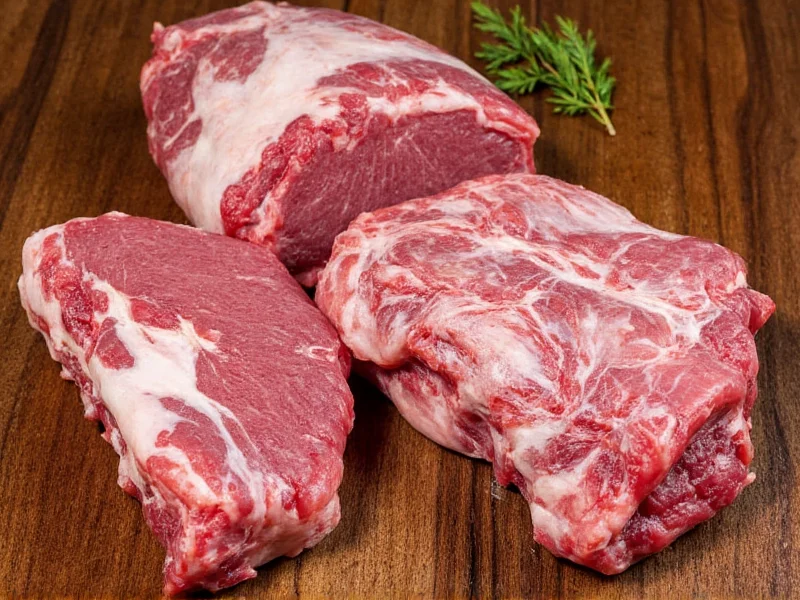The ideal temperature to unwrap ribs during the cooking process is between 160°F and 170°F (71°C to 77°C) internal temperature. This range represents the sweet spot where collagen has sufficiently broken down while maintaining enough structure for the final cooking phase. Professional pitmasters consistently recommend unwrapping at this temperature threshold to achieve perfectly tender yet firm ribs with excellent bark formation.
When smoking ribs using the Texas crutch method, timing the unwrapping phase correctly makes all the difference between fall-off-the-bone perfection and disappointing results. Understanding the science behind meat temperature transitions helps explain why 160-170°F represents the optimal window for removing that foil or butcher paper wrap.
The Science of Rib Temperature Transitions
Rib meat undergoes several critical transformations as it cooks. The magic happens primarily in the 140-180°F range where collagen converts to gelatin. This process requires both time and proper temperature. When ribs hit the 160°F mark, approximately 70% of collagen conversion has occurred, creating that desirable tender-but-intact texture.
The stall—that frustrating plateau where temperature stops rising—typically occurs around 150-160°F. This happens as evaporative cooling balances the heat input. Wrapping accelerates through this phase, but unwrapping too early sacrifices tenderness, while waiting too long risks mushiness.
Why 160-170°F Is the Perfect Unwrapping Temperature
At 160°F, ribs have reached what pitmasters call the “point of no return” for structural integrity. The meat has absorbed sufficient moisture from the wrap while maintaining enough firmness to handle the final cooking phase. This temperature range ensures:
- Complete rendering of intramuscular fat
- Optimal collagen-to-gelatin conversion
- Sufficient moisture retention without sogginess
- Adequate time for bark development during finishing
Going beyond 170°F before unwrapping risks over-tenderizing, where ribs may literally fall apart when handled. Below 160°F, the connective tissues haven't fully broken down, resulting in chewy, undercooked sections.
How to Accurately Check Rib Temperature
Proper temperature measurement is crucial for determining when to unwrap ribs. Follow these steps for accuracy:
- Use a high-quality instant-read thermometer with at least 0.5°F accuracy
- Insert probe horizontally between bones, avoiding bone contact
- Check multiple spots as temperature can vary across the rack
- Target the thickest part of the meat for most representative reading
- Verify temperature stability by checking 15 minutes apart
Many beginners make the mistake of checking temperature near bones, which conducts heat differently than meat. Always measure in the meat itself for accurate readings that reflect actual doneness.
| Temperature Range | Texture Characteristics | Recommended Action |
|---|---|---|
| 140-150°F | Firm, minimal bend | Continue cooking wrapped |
| 150-160°F | Moderate bend, slight separation | Prepare for unwrapping |
| 160-170°F | Good bend, clean separation | Unwrap immediately |
| 170-180°F | Excessive bend, potential mushiness | Unwrap with caution |
| 180+°F | Fall-apart tender | Too late to unwrap properly |
Step-by-Step Guide to Perfect Rib Unwrapping
Follow this professional method for optimal results when unwrapping ribs:
- Monitor closely as ribs approach 155°F internal temperature
- Check every 15 minutes once past 155°F to avoid overshooting
- Verify multiple spots across the rack for consistent temperature
- Unwrap carefully over a tray to catch any juices
- Pat dry thoroughly with paper towels to restart bark formation
- Apply finishing sauce (optional) before returning to smoker
- Cook uncovered for 30-60 minutes at 225°F until desired bark forms
The bend test provides excellent confirmation of proper unwrapping temperature. When lifted with tongs, properly cooked ribs should bend about 45 degrees with slight separation between bones but shouldn't fall apart. This visual cue complements your thermometer readings perfectly.
Troubleshooting Common Unwrapping Issues
Even experienced pitmasters encounter challenges with the unwrapping phase. Here's how to handle common problems:
Ribs Not Tender at 165°F
If ribs remain tough despite reaching the recommended unwrapping temperature, they likely need more time wrapped. Return to smoker for another 30-60 minutes before rechecking. This often happens with thicker racks or inconsistent smoker temperatures.
Temperature Stalls Persisting Past 160°F
When the stall continues beyond typical ranges, verify your thermometer accuracy. Consider increasing smoker temperature by 25°F temporarily to push through the stall, then reduce back to 225°F after unwrapping.
Soggy Bark After Unwrapping
Excessive moisture under the wrap can prevent proper bark formation. Ensure you're not adding too much liquid to the wrap, and pat ribs completely dry before returning to the smoker. Increasing airflow temporarily can also help dry the surface.
Advanced Techniques for Perfect Rib Texture
Seasoned barbecue enthusiasts employ several advanced methods to optimize the unwrapping phase:
- The double-wrap method: Initially wrap in foil, then switch to butcher paper at 155°F for better bark development
- Temperature-targeted unwrapping: Remove at 160°F for firmer texture, 165°F for balanced tenderness, or 170°F for more fall-off-the-bone results
- Finishing temperature control: Cook uncovered until internal temperature reaches 195-203°F for optimal tenderness
Remember that different rib cuts behave slightly differently. Baby back ribs typically reach the ideal unwrapping temperature faster than spare ribs due to their smaller size and less connective tissue. Adjust your timing accordingly based on the specific cut you're preparing.
Food Safety Considerations
While texture is the primary concern when determining what temp to unwrap ribs, food safety remains essential. The USDA recommends cooking pork to a minimum internal temperature of 145°F with a three-minute rest time. However, ribs require higher temperatures—typically 190-205°F—to properly break down connective tissues. The unwrapping phase occurs well within safe temperature ranges, but always verify final doneness reaches at least 190°F for proper tenderness and safety.











 浙公网安备
33010002000092号
浙公网安备
33010002000092号 浙B2-20120091-4
浙B2-20120091-4